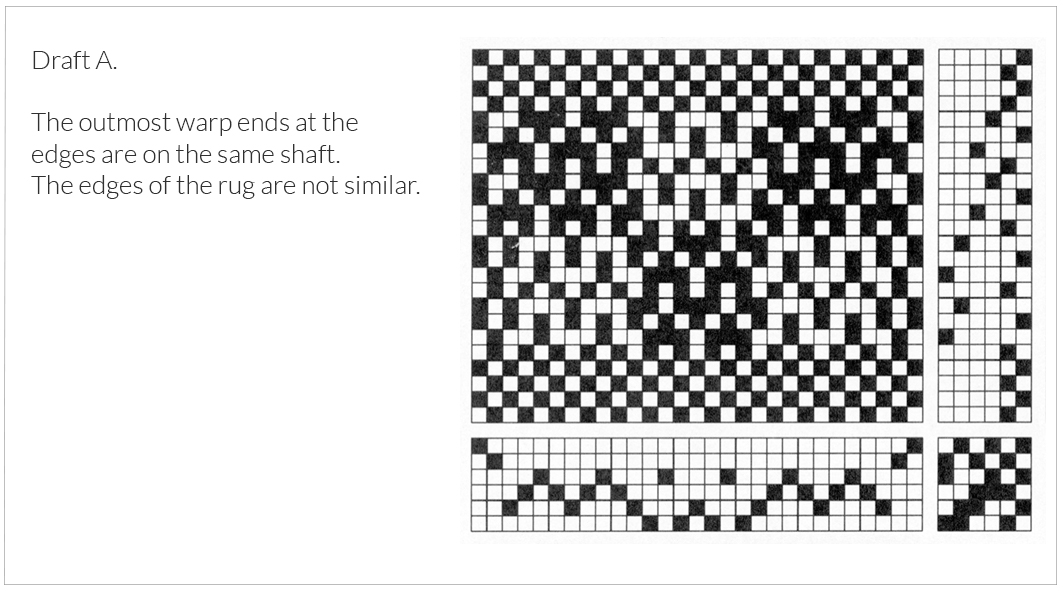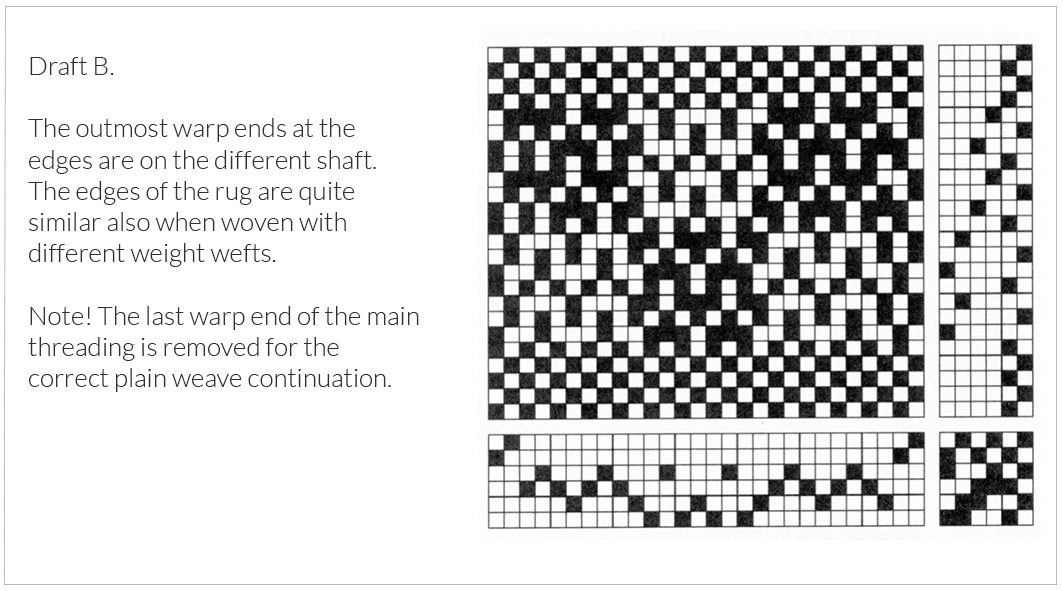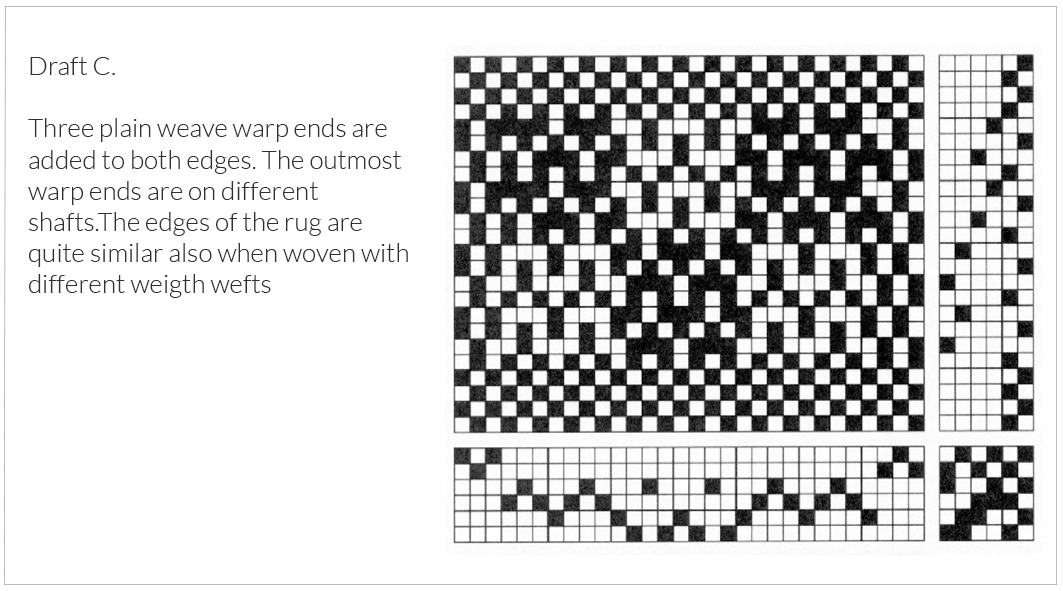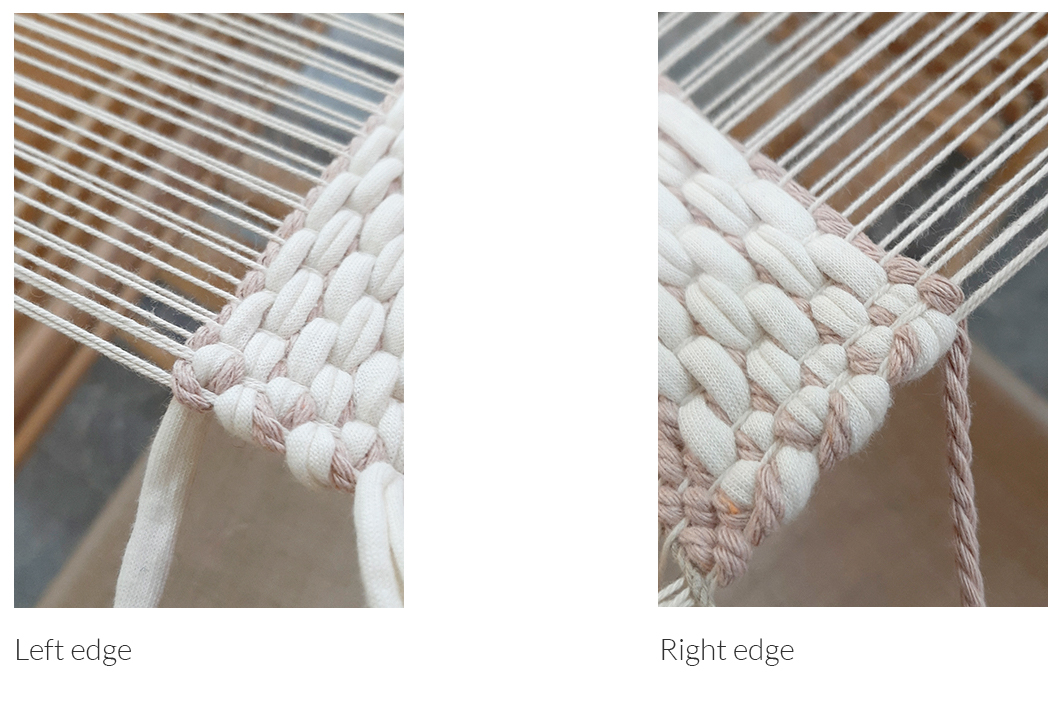| The warp | 12-ply Cotton Twine, tex 30×12, 1 kg = 2560 m, Suomen Lanka |
| Warp | width 106 cm density 2,5 threads/cm amount of warp ends 265 + 4 amount of yarn needed 600 g (= 104 g/1 m) |
| Length | 5,8 m |
| Reed | 25/1 |
| Weave | Crackle weave |
| Kude | Cotton rag weft, width for background 1,5 cm and for pattern 2,2 cm |
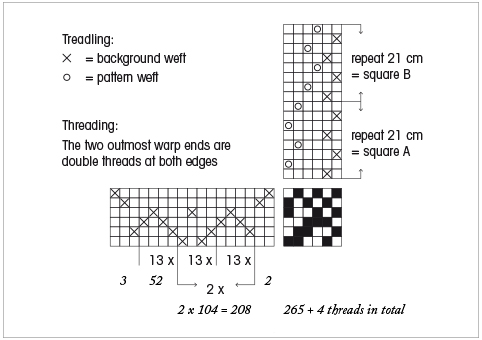
Amount of warp yarn needed
Background weft (tabby):
Cotton rag weft, width approx. 1,5 cm
approx. 1100 g per 1 rug
= approx. 120 g / 21 cm = 1 square height
Pattern weft:
Cotton rag wef, width approx. 2,2 cm
approx. 1600 g per 1 rug
= approx. 180 g / 21 cm = 1 square height
In total approx. 2700 g of background weft and pattern weft per 1 rug. Rag weft strips are cutted from the cotton sheets.
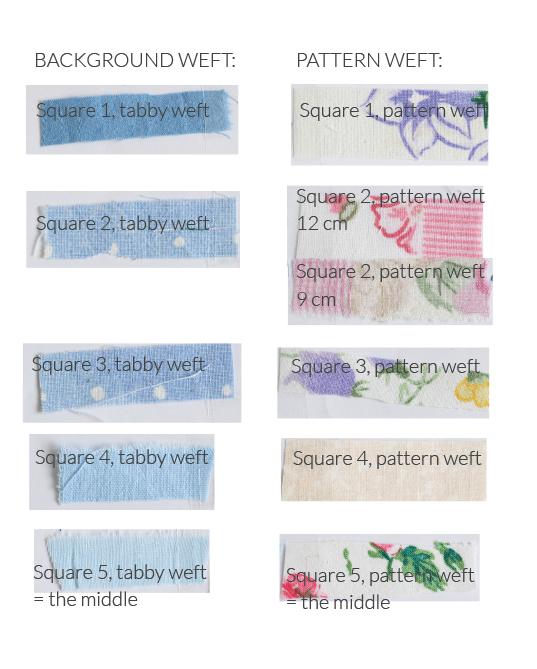
Weaving instructions
All blue shaded cotton rags are shuttled in the plain weave sheds and the mottled in pattern sheds. The pattern wefts are cut wider (n. 2,2 cm) than the background wefts. (n. 1,5 cm).
Start and finish the rug with few shots of 12-ply cotton twine/same yarn as the warp. One square height is 21 cm and there is 9 squares in this rug. The woven length of the rug is 189 cm.
Density of the weave is approx. 3 background weft + 3 pattern weft/1 cm.
Finishing
Tie 2 + 2 warp threads with a tight weaver´s knot. Make a twisted fringe. Cut the fringe to an even length.

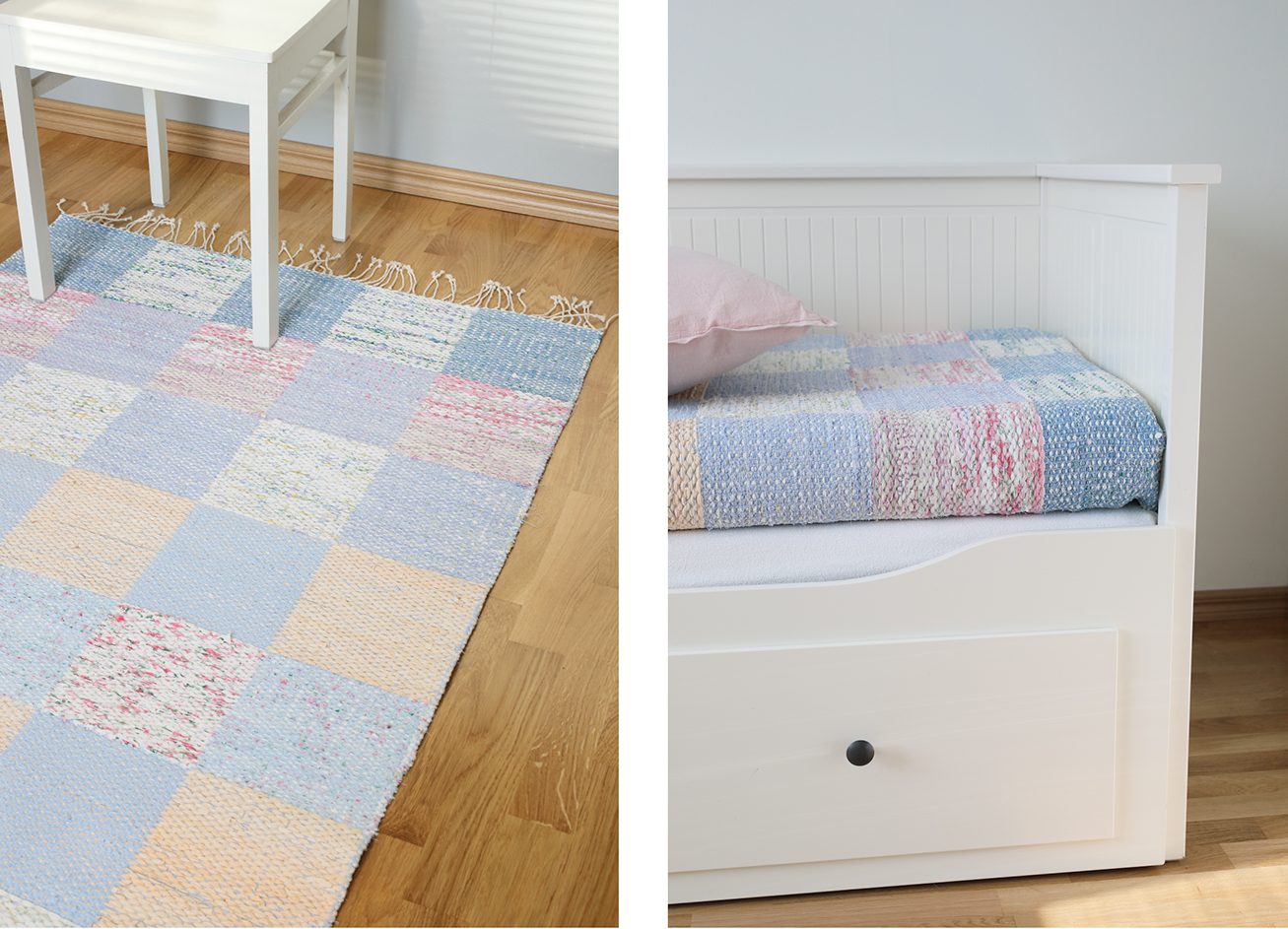
Add tabby shafts for the Selvages
There is not just one right way to thread selvedges for rugs. Different weaves need different kinds of threadings, and it also matters what kind of materials are in use.
FLOATING SELVAGES
The easiest way to have straight and neat edges is to leave the warp end (a double thread) at the outer edge away from the heddle. This works out with most weaves, but if the rug is an overshot weave with a plain weave background, it doesn’t help much. Long floats of the pattern wefts might still appear at the edges.
By trying out different threadings at the edges and different directions of the shuttling you might find a reasonable technique, but the simplest way is to add tabby shafts for the selvages. We added two tabby shafts to the checkered rag rugs on pages 30 – 33.
ADDED TABBY SHAFTS
Two extra shafts are added at the back of the main pattern shafts. Only the tabby warp threads are threaded on those shafts.
If the wefts are thin and the pattern weft is only slightly heavier than the background weft, the result will be good despite of the threading order of the tabby. When the weft materials are heavy or the difference of the pattern weft and background weft is considerable, the outmost tabby warp ends at the edges must be on different shafts to form similar edges.
The main threading of the rug must be adjusted so that the plain weave continues in a right order. The two outmost warp ends are double threads at both edges as is usual in rag rugs.
